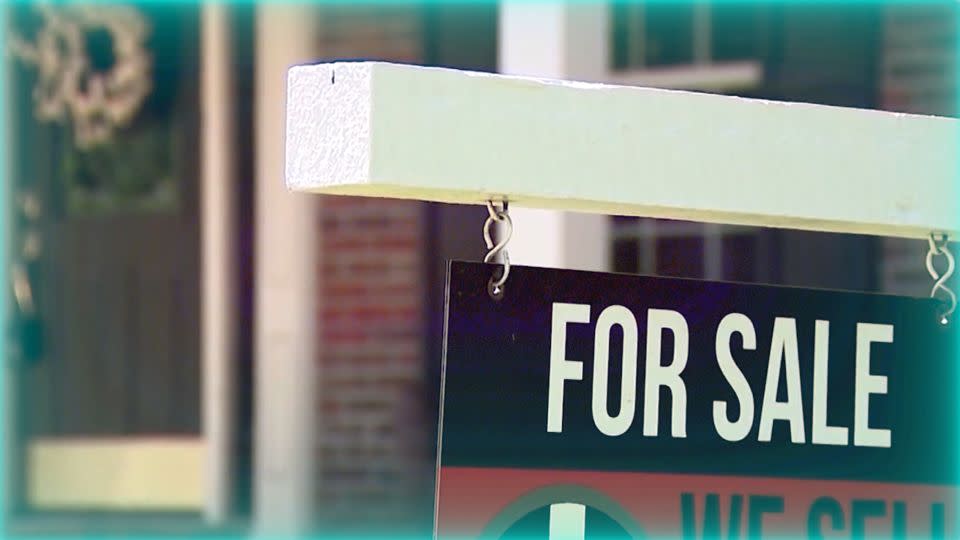
An already miserably unaffordable housing market is getting more expensive.
As mortgage rates top 7% — the highest they’ve been in 21 years according to Freddie Mac — home buyers face ballooning costs. Some housing experts are warning that rates could keep climbing toward 8%.
What does this mean for house hunters? Even ever-optimistic real estate pros say buyers and sellers must adjust their expectations.
“I don’t like to be ‘doom and gloom,’ this is my book of business,” said Bess Freedman, CEO of Brown Harris Stevens, a national real estate firm. “I still say real estate is the best long-term investment. But there has been a shift. It is flawed for people to assume that just because inflation has started to move in the right direction, that mortgage rates will go down, too.”
Despite recent reports that inflation is cooling, it’s still too high and the economy too hot — and for the housing market, that’s not good, said Freedman.
“The fact that we are seeing rates at these highs is having an impact on the housing market,” Freedman said. “Rates have doubled. Inventory is constrained. Prices are still elevated. Those three things are creating a sluggish housing economy.”
And there is little to suggest much of that will change in the near term, Freedman said, given the Federal Reserve’s continued concerns about inflation, which puts further rate hikes back on the table.
“Could rates go higher? Possibly,” Freedman said. “I don’t see any catalyst for them to go down. Because of that, people have to get their minds wrapped around where rates are now.”
Impact on the housing market
As rates for a fixed-rate 30-year mortgage have surged during the past 31 months — up from the lowest weekly average rate of 2.65% in January 2021 according to Freddie Mac — the payment made by a home buyer of a median priced home who put 20% down has risen by more than $1,200 a month. This has pushed buying a home out of reach for many people.
Buyers who are still in the market are finding historically low available inventory.
Because mortgage rates were so low during the pandemic, with people buying or refinancing into loans at 2% or 3%, there is little incentive for them to sell and buy another home at 6% or 7% or higher.
And due to the low inventory, prices are staying elevated. Median home prices hit their second highest level on record in June. At $410,200, they were just 0.9% less than the all-time high of $413,800 hit just the year before.
“We are at a critical juncture,” Lawrence Yun, chief economist for the National Association of Realtors, wrote in an online post on Thursday.
Minutes from the last Fed meeting, released this week, revealed continued concerns about inflation if the economy and labor markets don’t cool down, suggesting another rate hike may be on the table during the three remaining meetings this year.
That, along with Fitch’s downgrade of US debt, have exerted upward pressure on longer term borrowing rates, Yun said.
This week, the yield on 10-year US Treasuries crossed over the 4.2% threshold it had been bumping up against to 4.3% on Thursday, its highest level in over a decade. That’s a tipping point, according to Yun.
“If it breaks past that, then the momentum, however irrational, could push it up toward 5%,” he wrote. “That’s bad news for mortgage rates which correspondingly may rise to 8%,” he said.
At the current average mortgage rate of 7.09% the buyer of a median priced $410,200 home will pay $2,203 a month in principal and interest, according to calculation using a Freddie Mac tool. In January 2021, when the median home price was about $100,000 lower at $309,900 and interest rates were more than 4 percentage points lower at 2.65%, a home buyer locked into $999 a month payments.
“The increased mortgage rate is exacerbating housing affordability as home prices are climbing in this limited inventory environment,” said Jessica Lautz, deputy chief economist at NAR. “Something has to give for rates to come down, and that something is the next decision by the Fed.”
How did we get here?
This isn’t where forecasters thought we’d be, said Melissa Cohn, regional vice president at William Raveis Mortgage.
“We thought mortgage rates would be much lower by now,” she said. “All these Fed rate hikes were intended to slow inflation down much more quickly. But the economy has defied the rate hikes.”
Fed officials hiked interest rates to the highest level in 22 years. And although the Fed does not set the interest rates that borrowers pay on mortgages directly, its actions influence them. Mortgage rates tend to track the yield on 10-year US Treasuries, which move based on a combination of anticipation about the Fed’s actions, what the Fed actually does and investors’ reactions. When Treasury yields go up, so do mortgage rates.
The market is pricing in the potential for another rate hike, Cohn said, and there is a fair amount of risk in the economy, at this point. Lenders are taking note of that risk, keeping rates higher.
“The banks are protecting themselves,” she said. “Banks are trying to protect their bottom line.”
Unfortunately for home buyers, rates could go higher and are expected to stay elevated, said Cohn.
The consumer continues to spend and hiring continues, she said.
“Inflation will only truly drop when people are spending less money and there are fewer jobs,” Cohn said. “As long as the employment situation remains as strong as it is, it will be hard to get inflation down on an ongoing basis.”
The Fed will hold three more rate-setting meetings this year, in September, November, and December.
“The rest of the year we will be waiting to see what the Fed is going to do,” Cohn said. “I don’t see any true relief until next year.”